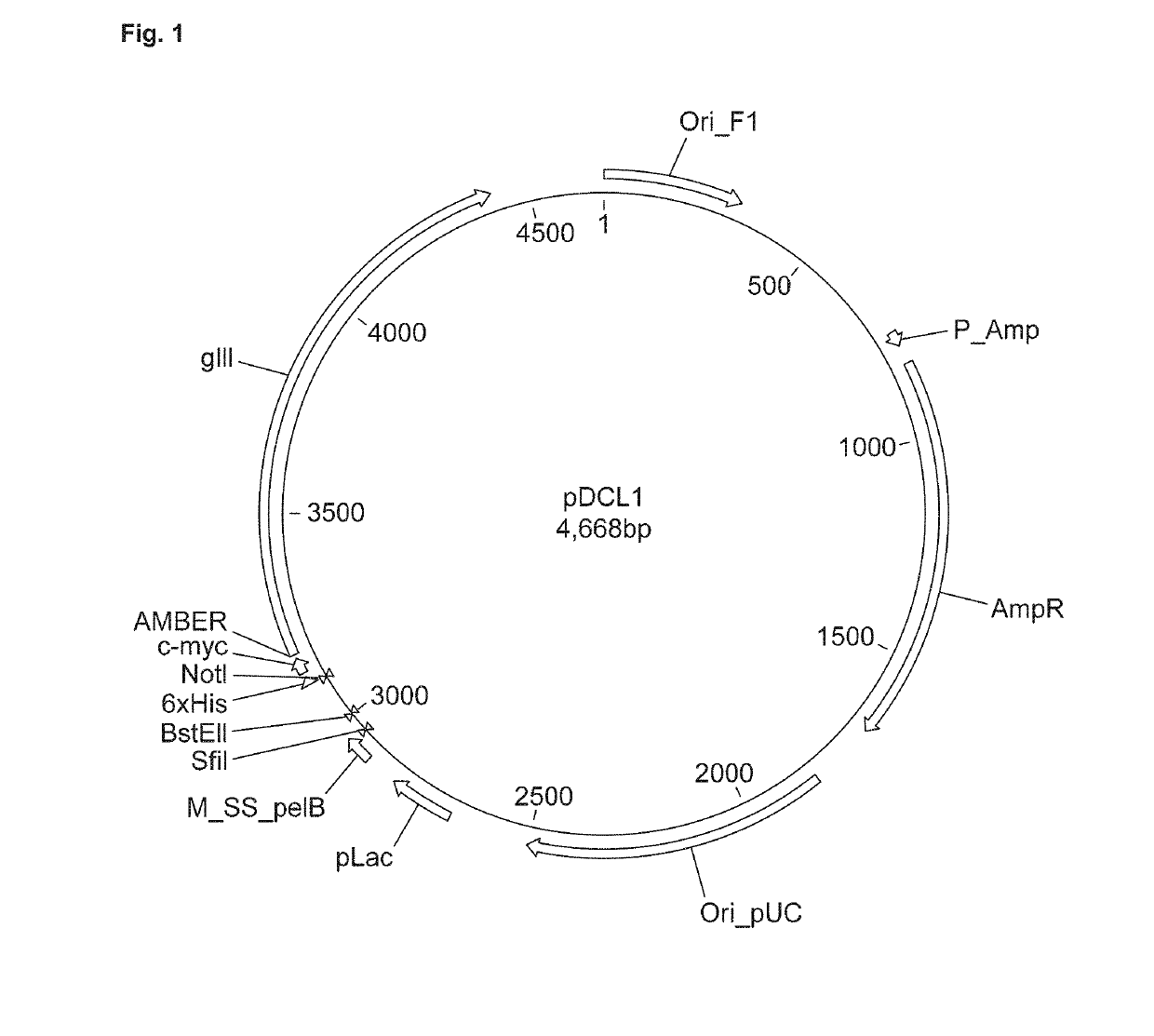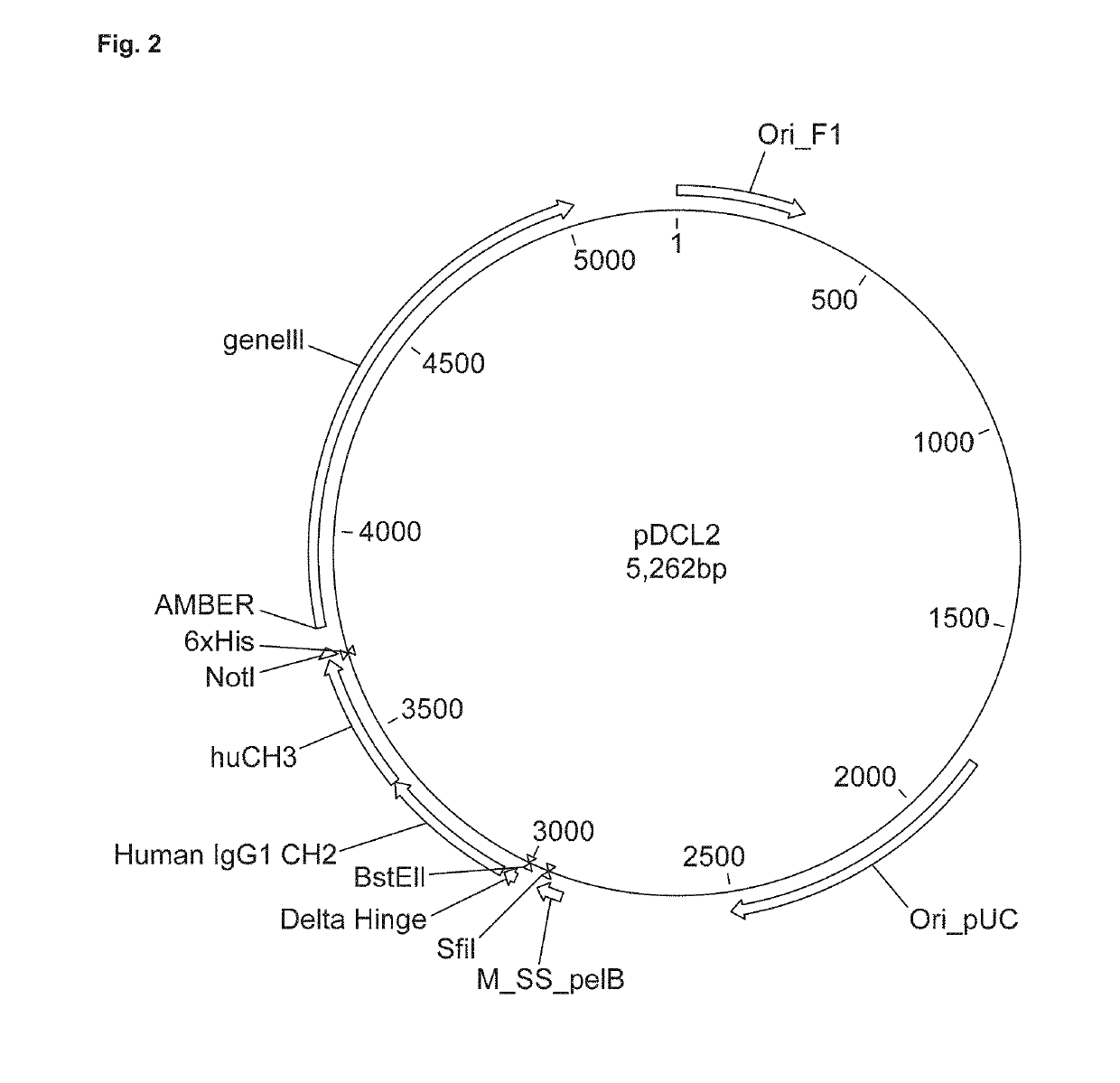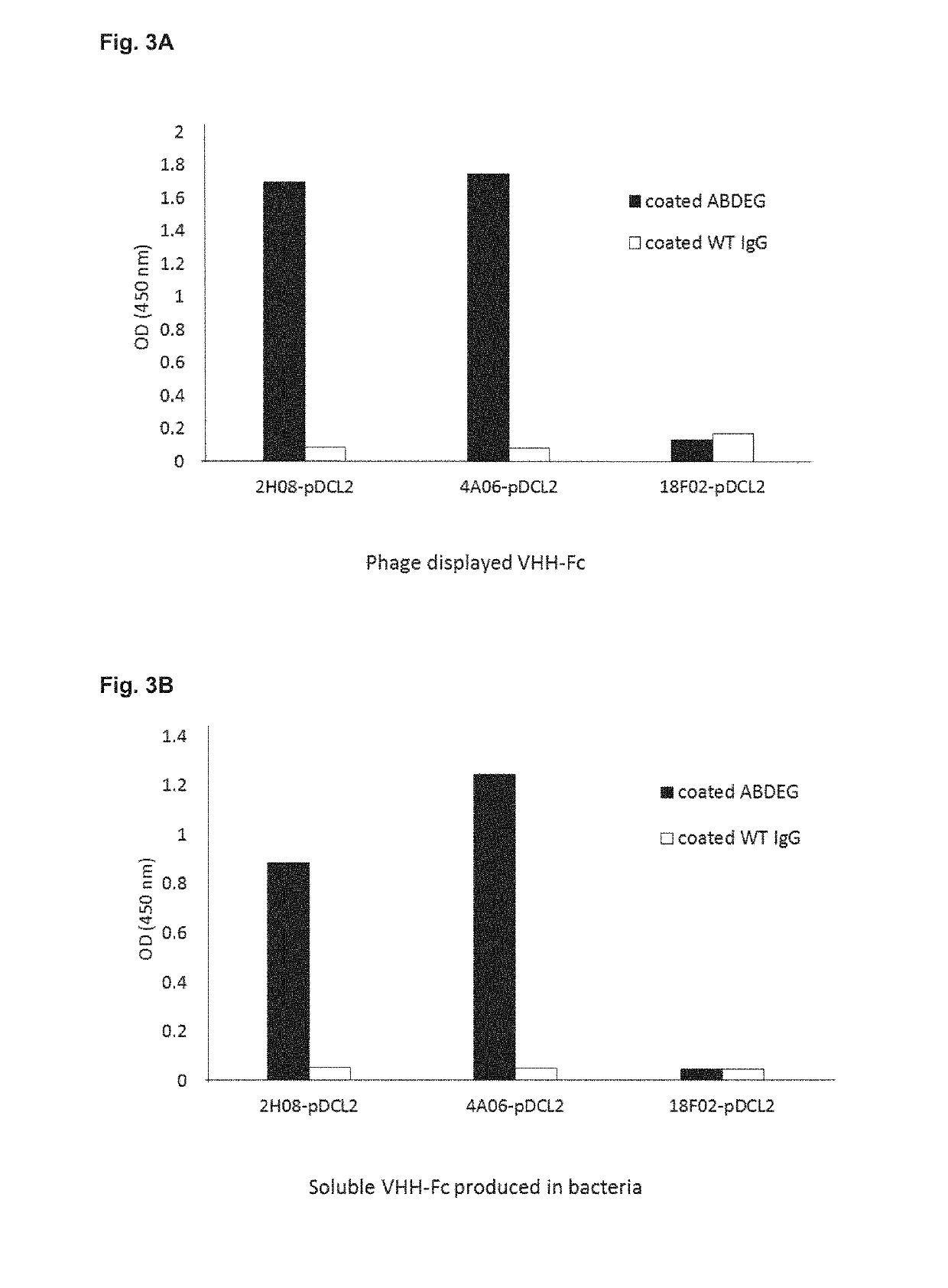Triple vector for expressing antibody molecules in full therapeutic format
- Summary
- Abstract
- Description
- Claims
- Application Information
AI Technical Summary
Benefits of technology
Problems solved by technology
Method used
Image
Examples
example 1
Cloning of Fc Molecules
[0087]Starting point was our standard phage display vector that we use for phage display of Camelid heavy-chain only (VHH) antibodies. The vector, internally referred to as pDCL1 and shown in FIG. 1, was modified by introducing a cloning site for hinge-plus-Fc sequences, while retaining the cloning site for VHH sequences. The resulting vector, internally referred to as pDCL2, is shown in FIG. 2. The nucleotide sequence of pDCL2 is shown as SEQ ID NO: 6.
[0088]The following hinge-Fc sequences were used:
[0089]A modified human IgG1 hinge-Fc (pDCL2). This is the human IgG1 hinge-Fc sequence lacking the first 5 amino acid residues (see SEQ ID NO:1; SEQ ID NO: 8 is the modified hinge region encoded by the polynucleotide of SEQ ID NO:9). This is to avoid the cysteine residue that serves in the IgG1 molecule to link the light chain. This cysteine would serve no purpose in a VHH-Fc molecule, and might cause unwanted dimerization.
[0090]The pDCL2 vector was generated by i...
example 2
Phage Display and Periplasmic Expression of VHH-Fc Molecules
[0093]Starting point was the pDCL2 vector produced in Example 1. The respective genes of VHHs 02H08 and 04H09 were cloned into pDCL2 via SfiI / BstEII. A VHH antibody labeled 18F02, known not to have any affinity to ABDEG, was cloned into pDCL2 as well, to serve as a non-binding reference.
[0094]The cloned vectors were transformed in E. coli TG1 to produce VHH-Fc molecules displayed on phage particles, and in periplasm of E. coli to produce soluble c-myc tagged VHH-Fc molecules using standard protocols. Binding to the antigen was tested using ELISA (OD 450 nm). Binding of phage display antibody molecules to immobilized ABDEG in ELISA was detected using an anti-M13 HRP conjugated antibody. The results are presented in FIG. 3A. Binding of soluble antibody molecules to immobilized ABDEG in ELISA was detected using an anti-c-myc HRP conjugated antibody. Results are shown in FIG. 3B. The results show that anti-ABDEG VHHs-Fc (02H08 ...
example 3
Phage Display Library of VHH-Human Fc Molecules
[0095]We had previously constructed an immune library, internally referred to as SD06, of anti-ABDEG VHH antibodies. This VHH library cloned into pDCL1 was obtained by initial amplification of the VHH-CH2 regions from cDNA of an immunized llama followed by a nested PCR using SfiI-tagged framework 1 (FR1) and NotI-tagged hinge specific primers. We used this SD06 library as the starting point for the following experiments.
[0096]The gel purified VHH-CH2 amplicon obtained for the generation of SD06 library was used as template in individual nested PCR reaction using different SfiI-tagged FR1 primers and a FR4-BstEII primer The generated VHH amplicons were pooled, gel purified, digested with SfiI / BstEII, and ligated into the pDCL2 vector using similar conditions as described in Example 1 for the cloning of 02H08 and 04H09 into pDCL1. The purified ligation mixture was used for electroporation of the TG1 E. coli strain to generate the VHH-huFc...
PUM
| Property | Measurement | Unit |
|---|---|---|
| Fraction | aaaaa | aaaaa |
| Affinity | aaaaa | aaaaa |
Abstract
Description
Claims
Application Information
 Login to View More
Login to View More - R&D
- Intellectual Property
- Life Sciences
- Materials
- Tech Scout
- Unparalleled Data Quality
- Higher Quality Content
- 60% Fewer Hallucinations
Browse by: Latest US Patents, China's latest patents, Technical Efficacy Thesaurus, Application Domain, Technology Topic, Popular Technical Reports.
© 2025 PatSnap. All rights reserved.Legal|Privacy policy|Modern Slavery Act Transparency Statement|Sitemap|About US| Contact US: help@patsnap.com



